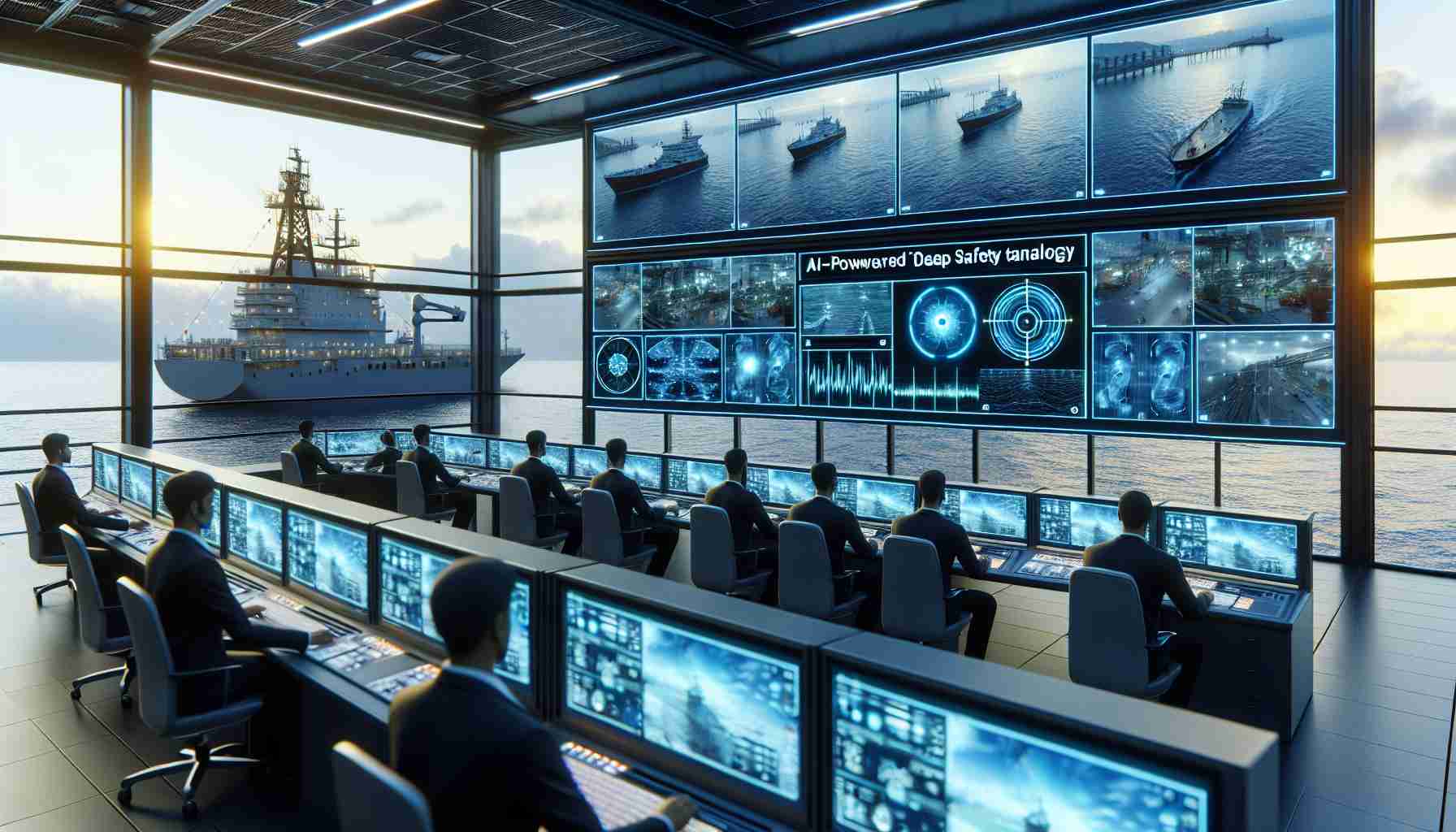Leading Maritime Company Advances Crew Safety with AI Technology
In a move to enhance maritime safety, HMM has announced the adoption of an advanced AI video analysis solution titled ‘DeepEyes.’ This cutting-edge system employs CCTV with onboard video analysis capabilities to safeguard crew members by identifying and responding to emergencies.
DeepEyes is engineered to detect various on-deck abnormalities such as fires, smoke, and personnel incidents involving missing safety gear, falls, or incapacitation. Upon recognizing an impending threat, the system swiftly informs the ship’s management and can initiate urgent broadcasts to alert those on board.
Initially, this innovative solution will be installed on a massive 24,000 TEU container ship – equivalent to the capacity of hosting 24,000 6-meter containers. The pioneering step will take place next month as a precursor to a broader implementation. After the preliminary installation, a trial period will commence to validate the effectiveness of DeepEyes. Once proven, HMM aims to consider a wider roll-out of the technology, placing crew safety at the forefront of its maritime operations, as reported by News1.
Maritime Safety Evolution: The Integration of AI-powered ‘DeepEyes’ Video Analysis
The adoption of advanced AI in maritime safety is not new but reflects a growing trend in embracing digital transformation within the industry. AI technologies like ‘DeepEyes’ offer the potential to drastically reduce human error, which is a significant factor in maritime incidents. The use of AI for video analysis can complement the vigilance of crew members, providing a level of constant monitoring that is difficult to achieve through human observation alone.
Most Important Questions & Answers
1. How does ‘DeepEyes’ benefit crew safety in ways traditional systems cannot?
‘DeepEyes’ enhances crew safety by providing continuous monitoring and rapid detection of emergencies. Traditional systems rely on manual observation and may fail to detect subtleties that AI-powered systems can identify through pattern recognition.
2. What types of emergencies can ‘DeepEyes’ detect?
The system is capable of detecting fires, smoke, and risks involving personnel such as the absence of safety gear, falls, or incapacitation, therefore addressing a range of potential maritime safety issues.
3. What are the challenges in implementing such AI-powered systems?
Challenges include ensuring the accuracy and reliability of the AI algorithms, integrating the system with existing maritime infrastructures, and appropriately responding to the automated alerts generated by the system.
Key Challenges or Controversies
One key challenge in implementing AI systems like ‘DeepEyes’ is the possibility of false positives, which could trigger unnecessary alarms and lead to ‘alarm fatigue’ among crew members. Additionally, the reliability of AI in varying weather conditions and sea states is a challenge that needs comprehensive testing and refinement. There’s also a concern about the potential for reduction in crew vigilance, relying heavily on automated systems for safety checks instead of maintaining strong safety practices.
Advantages and Disadvantages
Advantages:
– AI systems can monitor areas incessantly, reducing the risk of human oversight.
– Faster response times in emergencies can result in better outcomes and potentially save lives.
– The automated detection of safety gear use can lead to improved compliance with safety regulations.
Disadvantages:
– Initial implementation costs can be significant.
– Dependence on technology can reduce human vigilance and might introduce new risks.
– AI systems require thorough testing to ensure their reliability, especially in harsh maritime environments.
For further information on maritime safety and the use of AI technology in this domain, the following links may provide a starting point:
– International Maritime Organization (IMO) for international shipping regulations and safety guidelines.
– MarineTraffic for vessel movements and maritime analytics.
– Marine Technology News for the latest on maritime industry technology and innovations.
In the context of maritime safety, it is essential to have a blend of technology and human expertise to create the most robust system for preventing and responding to onboard emergencies. The ultimate goal is a safer maritime environment through the integration of advanced technology with solid safety protocols and well-trained crew.

